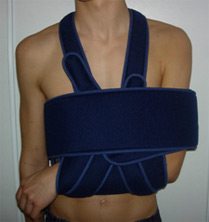shoulder fracture in Tunisia
Definition of Shoulder Fracture
 Shoulder trauma is common. Injuries range from a separated shoulder resulting from a fall on the shoulder to a high-speed car accident that fractures the shoulder blade (scapula) or collarbone (clavicle). One thing is certain: everyone injures their shoulder at some point in life.
Shoulder trauma is common. Injuries range from a separated shoulder resulting from a fall on the shoulder to a high-speed car accident that fractures the shoulder blade (scapula) or collarbone (clavicle). One thing is certain: everyone injures their shoulder at some point in life.
Shoulder Anatomy
The shoulder is made up of three bones:
Scapula (shoulder blade)
Clavicle (collarbone)
Humerus (arm bone)
These bones are joined together by soft tissues (ligaments, tendons, muscles, and joint capsule) to form a platform for the arm to function. The shoulder is made up of three joints:
Glenohumeral joint
Acromioclavicular joint
Sternoclavicular joint
The shoulder also has an articulation, which is the relationship between the shoulder blade (scapula) and the chest wall. The main shoulder joint is the glenohumeral joint. This joint includes a ball (the humeral head) on a tee-like socket (the glenoid of the scapula).
The shoulder bones are covered by several layers of soft tissue:
The top layer is the deltoid muscle, a muscle just under the skin, which gives the shoulder a rounded appearance. The deltoid muscle helps lift the arm overhead.
Directly under the deltoid muscle is a subdeltoid bursa, a fluid-filled sac, analogous to a water balloon.
Medical Treatment of Shoulder Fracture
 Most non-displaced fractures require immobilization in a sling until the fracture heals sufficiently to be comfortable and allow movement without risk of dislodging the fracture fragments. X-rays are used to determine if sufficient healing has occurred to allow movement exercises.
Most non-displaced fractures require immobilization in a sling until the fracture heals sufficiently to be comfortable and allow movement without risk of dislodging the fracture fragments. X-rays are used to determine if sufficient healing has occurred to allow movement exercises.
It is essential to maintain flexibility of the elbow, wrist, and fingers while resting the shoulder. With your doctor's guidance, you can begin to move the shoulder as the fracture heals. If the arm is moved too early, it can delay healing, but too little movement will result in stiffness.
Surgical Treatment of Shoulder Fracture
If the fracture fragments are displaced, surgical procedures may be necessary to bring the pieces together and fix them with wires, pins, plates, or screws.
If the ball portion of the upper arm is broken, split, or crushed, shoulder replacement may become necessary.
Because the majority of shoulder fractures are not displaced, recovery of good to excellent movement and function is often achieved. Displaced fractures often require surgery and can result in injuries to adjacent muscles. This can lead to more shoulder pain, weakness, and residual discomfort.
What are the Risks of Surgery?
Some of the risks of shoulder replacement surgery include infection, healing problems, bleeding, and damage to nerves and blood vessels near the fracture. Sometimes the shoulder becomes very stiff. Sometimes the fracture does not heal and another operation may be recommended.
Recovery After Surgery
This is often affected by the severity of your original injury. You may need help with dressing, bathing, washing, and eating for five to 10 days. We will ensure you have enough pain medication to keep you comfortable.
Your doctor will examine you and evaluate your X-rays to determine your progress. Your return to work will be sooner for office work, and later for work-related professions.
Rehabilitation After Surgery
Physical therapy to promote movement and strength is often necessary to maximize recovery and improve outcomes. Your doctor and therapist will work together and advise you on when to progress in your activities and exercises.